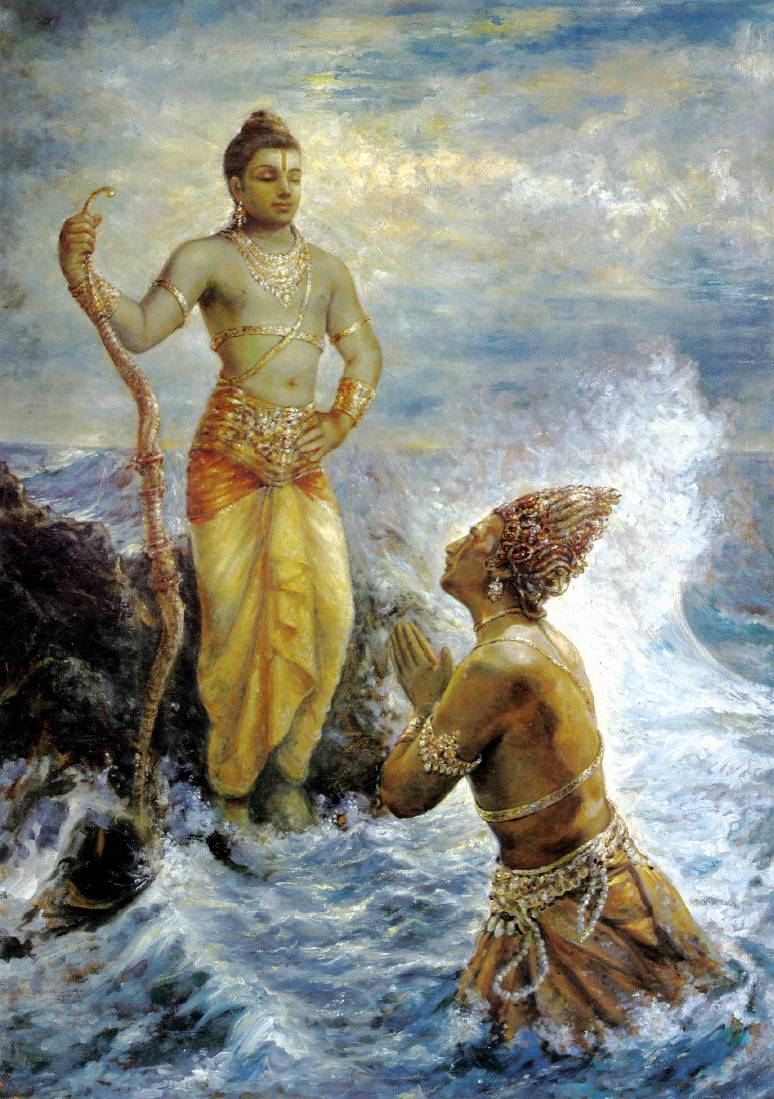

It is their voices to which she listens again and again, and from which her own inner voice finally gains strength. Rather than being given descriptions of the women and their exchanges, we listen to their voices, which is liberating in itself, and true to Sita and her own journey as well.
#DEFINE RAMAYANA SERIES#
Sita’s encounters with these women – Surpanakha, Ahalya, Renuka and Urmila – form a series of dialogues. Fight, meditate, look within until you find the truth that is you.” This is Sita’s last and most important lesson. She tells Sita: “You must liberate yourself from Rama… Each of these trials is meant to liberate you from Rama. In ‘The Liberated,’ Sita meets Urmila, who observed a penance of silence for fourteen years while Lakshmana accompanied Rama into the forest and meditated on herself and her identity. But those sons become heirs to their father… They submit to his authority… Why bear such sons?” Then what’s left of her? She thinks giving birth to sons is the ultimate goal of her life. “A woman thinks she doesn’t have a world other than that of her husband’s…” she tells her, “But some day that very husband will tell her that there is no place for her in his world. In ‘The Sand Pot,’ Renuka, whose husband ordered their son Parasurama to chop off her head for looking at a man, illuminates for Sita the futility of identifying oneself as merely a wife or mother. When Sita defends Rama proudly as a seeker of truth and his love as true, Ahalya points out: “What does conducting an enquiry imply…? Distrust, isn’t it? Wouldn’t it be better, instead, to believe in either your innocence or guilt?”

She counsels Sita on the power of men in compelling women to question their fidelity and the meaningless of such questioning to begin with.
#DEFINE RAMAYANA FULL#
But the Ahalya Sita meets is full of life and wisdom. Like us, Sita has been told her story – how Indra lusted after her and disguised himself as her husband Gautama in order to fulfil his desires, how Gautama disowned Ahalya once it became clear what had happened and how Ahalya turned into a rock as a result. In ‘The Music of the Earth’, Sita meets Ahalya. Surpanakha teaches Sita that joy need not depend on a man, or anyone at all. Sita finds Surpanakha in a forest home amidst a beautiful garden she has cultivated, through which she has conquered her feelings of rage and retribution. Sita has reflected that she and Surpanakha are similar, despite being of rival kingdoms and races, in that they have been both been marred by Rama’s love. Sita’s thoughts have circled around her ever since Rama mutilated her for declaring her love for him. Her first adventure – the story called ‘The Reunion’ – takes Sita to the ‘demonness’ Surpanakha herself, the sister of Ravana. She ends up sure of herself and her values, and her need for no one, not even Rama. As she meets one woman after another – the ‘minor’ women characters of Valmiki’s Ramayana, Surpanakha, Ahalya, Renuka and Urmila – she questions her husband and his dharma, her own identity and the complexities of the ideas of truth and fidelity. Sita starts off full of pain and confusion about the past and her husband’s abandonment, as well as an almost stubborn confidence in his virtue and love. These adventures form the stories in her narrative of liberation. Sita loves the peace and beauty and wildness of the deep forest, a contrast to the splendour of the capitals of her past life and wanders through it unafraid, seeking her own adventures. Ravana abducted Sita after Rama cut off his sister Surpanakha’s nose and ears. She has been abandoned by her husband Rama, king of Ayodhya, even after he freed her from the ‘demon’ king of Lanka, Ravana. In Volga’s narrative, a single Sita raises her sons by herself in Valmiki’s ashram. It is an important addition to the thousands of retellings of the epic that exist – not all focusing on privileged princess Sita, like Volga’s – largely so because many of those are yet to be translated into English, and also because it is remarkable in itself. Vijayasree, tells of a very different heroine from that of Valmiki’s and Rama’s Ramayana.

The Liberation of Sita, written by the well-known Telugu writer Volga and translated into English by T. By refusing to bow down to external authority, Sita had fully experienced, for the first time, the inner power of self-authority. Rama was left speechless by these solemn words.ĭevoid of Sita’s support, Rama tasted defeat for the first time in his life.


 0 kommentar(er)
0 kommentar(er)
